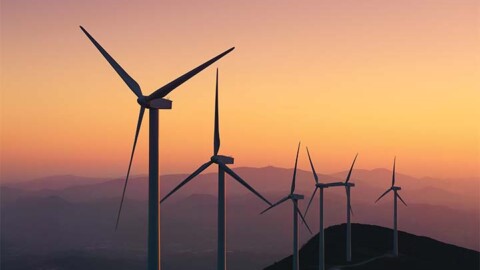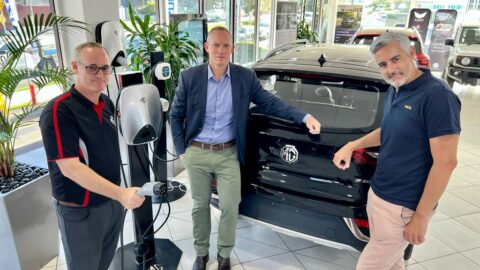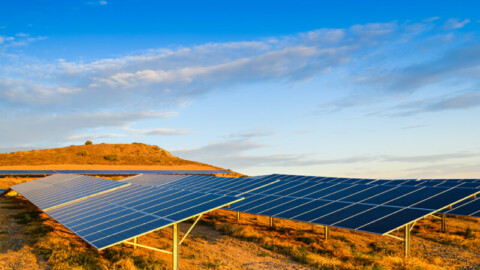By Kirstin Crothers, Senior Conference Producer – Energy, Quest Events
The Australian Domestic Gas Outlook (ADGO) conference is back again for 2023, taking place in Sydney from 20-23 March.
The annual event brings together experts and leaders of the gas industry for high-level discussions on the future of the Australian market.
Some of the issues that will be discussed at ADGO 2023 include resolving the east coast gas policy; competitive pricing for gas users; and effective carbon mitigation for the gas sector.
ADGO recently interviewed some of the speakers to get their insights on the challenges and opportunities presented by alternative gases.
The speakers include:
- Linda Cardillo, General Manager – Renewable Gas, Jemena
- Andrew Tan, President & Chief Executive Officer, Chiyoda Oceania
- Emma Roberts, Executive General Manager Future Energy, CS Energy
- Jim Snow, Adjunct Professor, Energy Initiative, University of Queensland; Executive Director, Oakley Greenwood
- Peter Kristensen, Chief Strategy Officer, Evida (Denmark)
Why is everyone talking about renewable/alternative gases now? What has stimulated this interest?
The growing awareness of renewable gas in Australia is linked to an international mandate to reduce carbon emissions, and domestic price and supply pressures.
The need to reduce carbon emissions from energy generation (the energy transition) is driving change across the world. Australia’s export markets are considering alternatives to fossil fuels.
Andrew Tan nominates Japan’s initiatives “to reduce their carbon footprint via the use of renewables and cleaner fuel sources” as especially forward-thinking.
Evida runs Denmark’s gas distribution grid, which was 25% biogas at the end of 2021. Peter Kristensen says that the growth of renewable gases was stimulated by a decision to move towards a low emission society. He says that by 2012/2014 “it became clear that the future of gas was dependent on having a carbon-neutral gas. We needed to find ways of making the gas system green.”
Internally, Australia has had to come to terms with the consequences of not having a viable alternative to natural gas. Linda Cardillo says the events of 2022 highlighted how vital gas is to Australia’s energy system in stabilising the grid and shoring up reliability.
Emma Roberts sees alternative gases providing dispatchable power to provide reliable energy to the grid at times when other sources (such as wind and solar) are not available. Emma suggests that blending hydrogen with natural gas will provide lower emissions gas in the long term, but says, “the objective is to shift towards renewable hydrogen to provide dispatchable power. This will be an important insurance policy to meet peak electricity demand.”
Both Linda Cardillo and Jim Snow see hydrogen as a long-term energy source, emphasising the need to explore biomethane and renewable methane as immediate replacements for natural gas. Jim is keen to point out that existing infrastructure and appliances can seamlessly switch to biomethane and renewable methane, while industrial gas users can swap without costly re-tooling of manufacturing processes. Linda says, “industries which rely on gas as a feedstock are looking seriously at renewable gas as a way they can reduce carbon emissions.”
Jim is especially enthusiastic about biomethane and renewable methane as practical low-cost ways of reducing carbon emissions without dismantling or rebuilding pipelines and storage facilities. He cites ARENA’s Bioenergy Roadmap, saying “cost estimates for biomethane are competitive with natural gas and the size of the available bioenergy feedstock resources is sufficient to replace all the natural gas used in the east coast domestic gas market.”
Linda notes that a number of new biomethane and green hydrogen projects have started to come online, demonstrating the viability of renewable gas. She explains, “Our Western Sydney Green Hydrogen Hub is blending green hydrogen – that is hydrogen produced from electrolysis which is offset by renewable electricity certificates – into the Jemena Gas Network, and our biomethane project in partnership with Sydney Water and ARENA is getting very close to completion.”
Can natural gas and alternative gases co-exist or does it have to be either/or? What are the issues and can they be overcome?
Cost of production and infrastructure (in)compatibility are two major hurdles that hydrogen needs to overcome. Andrew Tan says natural gas and renewable hydrogen “definitely can co-exist and need to co-exist until alternative gases reduce in price and until infrastructure to use the alternative gases mature.”
Linda Cardillo says we need to look overseas, where biomethane and synthetic are produced at scale. “Renewable natural gases (RNGs) are indistinguishable from natural gas, as they are essentially the same energy molecule just produced from renewable non-fossil fuel sources. The other well-known renewable gas is green hydrogen, which can also be blended into natural gas distribution networks in blends of up to 20% without impacting network performance.”
“Jemena has identified potential sources of about 30 petajoules of biomethane – agricultural waste, waste water plants, landfill – in proximity to our network. That’s about the same as our residential customers use each year.”
For Peter Kristensen, this question almost answers itself: natural gas already co-exists with biomethane in the Evida network. He explained, “Biogas is upgraded to natural gas quality (reducing the amount of CO2 in Biogas). Apart from ensuring you have the right quality, the main challenge is that with decentralised production you turn the gas system upside-down, which means you need compressors to move the gas around.”
Jim Snow identifies the three key renewable gases as hydrogen, biomethane and renewable methane, and predicts that each will mature at different times. He believes that biomethane development can be very quick, whilst hydrogen needs to lower its costs. He is concerned that high energy prices and low reliability of supply will cause “great unrest in the short term and elicit huge and inefficient government subsidies to try and placate consumers.”
The solution he proposes is to quickly advance the production of biomethane through subsidies, to ensure sufficient gas capacity comes into the market.
“The thrust must be to reduce natural gas through alternative gas use wherever this is possible.”
Emma Roberts sees more of a role for hydrogen in the short term. She wants energy producers to take advantage of declining technology costs to increase their production facilities. In the long term, especially as hydrogen export grows, producers can develop a natural sink for hydrogen that they have produced or are ramping up to produce. “It is likely that natural gas and renewable hydrogen will co-exist for some time as technology and industry develops,” she says.
How can natural gas businesses/asset operators capitalise on the growth in renewable gases?
Andrew Tan describes the shift to renewable gases as “inevitable”, and suggests that current operators need to plan for this transition or struggle to survive in the future. He is convinced by investing in renewable gases now, they will be setting themselves up to remain viable. As a first step, he nominates blending their gas mix to combust cleaner non-carbon emitting gases, noting that this is not as easy as it sounds due to compatibility issues.
Andrew Tan encourages energy users to build their own renewable plants to produce RNGs and thus control supply and pricing for their own needs, instead of relying on others. Jim Snow is equally bullish, saying this is the right time to invest. He notes that some heat energy users are already quietly producing biogas/biomethane at scale. He nominates one-step renewable methane reactors (water + renewable power + zero emission CO2) as a particularly promising technology for behind-the-meter users. He is not so enthusiastic about hydrogen exposure until the development of breakthrough technologies substantially reduces costs.
As a traditional gas retailer, Linda Cardillo says Jemena is well-placed to support the development of a renewable gas sector. “We have the people, capabilities and skills in operating a complex gas distribution business to understand how to get gas to customers safely and efficiently. We also have strong relationships with those customers, understanding the drivers for them as they look to reduce their carbon footprint.”
In Denmark, biogas is upgraded to “natural gas quality” so all the existing assets including industry machinery continue to be used, but now with a carbon-neutral energy source. Peter says with allows for flexibility, “You can actually shift back and forth between using biomethane and/or natural gas, depending on the market requirement for carbon neutrality.”
Which specific types of renewable gases are likely to dominate the future energy system and for what purposes (domestic/consumer, industrial heat energy, transportation etc)?
Emma Roberts says CS Energy has been focussing on renewable hydrogen because of its potential use in power generation and transport (both here and offshore). She notes that hydrogen has other emerging markets which may provide near-term opportunities, such as a sustainable aviation fuel.
Andrew Tan agrees that hydrogen is likely to dominate the future energy system.
“Ultimately in the future, all businesses that need a leaner energy source will use hydrogen in some way in their processes.”
Jim Snow envisages biogas/biomethane and then renewable methane for use in power generation (for grid stability), as renewable energy storage and as backup for hard-to-abate industries and for many commercial uses. He believes hydrogen will play a role in the transport sector (and for some specific industrial uses), saying, “in my view as it displaces liquid fuels in various ways, but this will likely take more time to occur.”
Linda Cardillo says Jemena can see an immediate role for RNGs such as biomethane in our networks. “It’s 100% compatible with our infrastructure and our customers’ ordinary household gas appliances. The production of biomethane – is also both technically and economically viable today, making it an attractive investment that can help fast-track the reduction in carbon emissions of Australian domestic energy consumption this decade.”
Peter Kristensen says that the Danish experience is that methane (natural gas and biomethane) is predominately used for heavy industries. It is also useful as a peak load/spare capacity for electricity generation. He says, “After the war in Ukraine and rising energy prices, it has become clear that even with a high amount of electricity coming from renewable energy (wind and solar), there is a need for industry to have alternative energy sources.”
Whether it is hydrogen, biogas, biomethane or renewable methane, it is clear that the future for RNGs is bright. The gas industry and users need to explore all the options and invest now or risk being left behind.
Join us at ADGO to hear from Linda Cardillo, Andrew Tan, Emma Roberts, Jim Snow, Peter Kristensen and a host of other domestic gas leaders on 20-23 March 2023. Learn more.

















